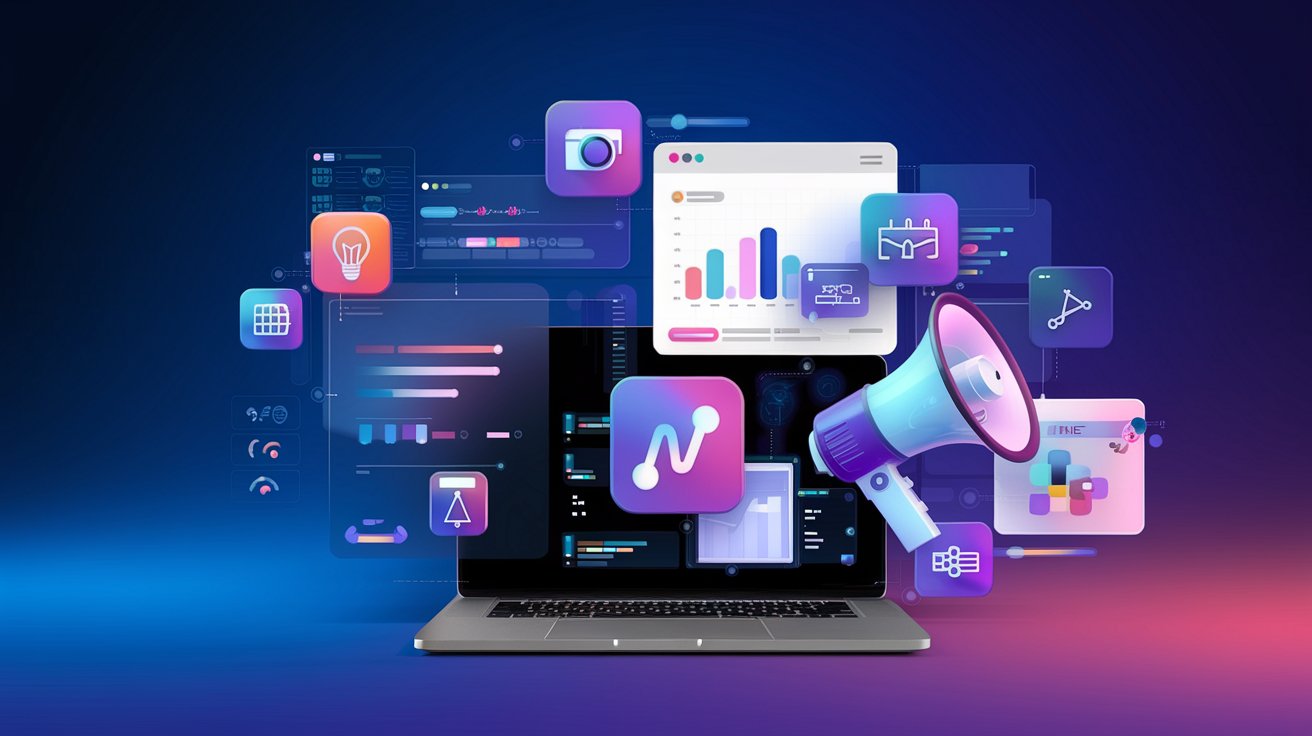Germany’s 2025 digital marketing landscape: Key trends
Written by
Kinga EdwardsPublished on
Here is the future of digital marketing in Germany for 2025. Learn about essential trends to enhance your marketing efforts effectively.

90% of Germans are online, and experts predict that the digital advertising market will grow by 10% in 2025.
That’s a big jump for a country where traditional media still dominates ad budgets. But the numbers don’t lie – more people are shopping, researching, and interacting with brands online than ever before. If you’re marketing in Germany, now’s the time to rethink your strategy.
Check out the latest digital marketing trends in Germany and see what’s working in this market.
What social media trends are shaping the digital landscape in 2025?
More than 67.8 million Germans are active on social media – that’s over 80% of the population. Whether you’re marketing a global brand or a local shop, this is your moment to connect with an audience that’s already scrolling. However, a typical user manages 5.4 accounts, giving you multiple chances to make an impression.
Almost everyone is accessing social media on their phones. 95.1% of users prefer mobile to desktop. That means vertical videos, swipe-friendly ads, and fast-loading content aren’t optional – they’re essential.
The most popular social media platforms
If you’re wondering where to focus your efforts, here’s an overview of the most popular platforms in Germany:
- WhatsApp– the reigning champion, with 80% of users logging in monthly. Messaging campaigns? Customer support? This is your platform.
- Instagram – 61.9% of Germans aged 16–64 use it, making it a go-to for visually-driven brands.
- Facebook – still a powerhouse. With 60.2% usage and nearly 40% of users aged 13+ reachable via ads, Facebook remains a top choice for businesses.
- TikTok – while only 36.3% log in monthly, users spend an average of 37 hours per month on the platform. That’s unmatched engagement for brands looking to go viral.
You can treat social media as your digital storefront. Germans aren’t just scrolling for entertainment – over 50.8% of users aged 16–64 use platforms to research brands and products.
How to get prepared for mobile well?
- Go mobile-first. Your content should be built for small screens.
- Meet them where they are. Use WhatsApp for direct communication, Instagram for brand building, and Facebook for ad reach.
- Be authentic, show people who you are, share your story, and build trust with every post.
- Invest in ads. Platforms like Facebook and Instagram are proven performers when reaching and converting audiences.
Search engine optimization trends
With almost the entire German population online, where consumers favor content in their native language, localized SEO is necessary. And this 90% is your audience waiting to discover your brand.
Germans prefer buying in their native language. Even though many are fluent in English, content in German resonates better. Also, Google holds the lion’s share of the search engine market in Germany. If you’re wondering where to focus your efforts, the answer is simple: optimize for Google.de. Start by using a backlink checker to analyze referring pages in this language.
Do you want to connect deeply? Go beyond and use local dialects that resonate strongly with users in specific regions, like Bavarian or Saxon.
Take care of localization, authority, and strategy. With Google dominating the search landscape and Germans prioritizing quality content, your brand needs to speak their language – literally and figuratively.
Trends in email marketing
Germans are among the world’s top email senders. In 2023, eight out of ten people checked their inboxes regularly. Even with a slight decline in recent years, email is still one of the most powerful digital marketing channels in Germany.
In April 2024 alone, Germany sent over 8.5 billion emails every day. Only the United States sends more.
The GDPR factor: What marketers need to know
Email marketing works in Germany, so marketers should keep the strict GDPR rules in mind. If you’re sending emails, you must have explicit consent from recipients. No consent? No campaign.
The good news is that people still want emails – as long as they’re relevant. Personalized (use, e.g., an email signature generator), well-targeted campaigns are something marketers should aim for.
Why do Germans rely on email?
- According to Forbes, 88% of people check their email daily. In Germany, email is a trusted, and widely used form of communication.
- Statista reports that in 2024, 361.1 billion emails were sent worldwide. By 2027, that number is expected to hit 408.2 billion.
- On the contrary to social media algorithms, email puts your message directly in front of your audience.
On top of that, email marketing is cost-effective (unlike paid ads, email doesn’t require massive budgets), measurable (open rates, click-throughs, and conversions – every interaction can be noticed), and easily scalable. That’s why many businesses turn to email marketing agencies to help execute targeted campaigns that align with these strengths.
anchor: email marketing agencies
Digital advertising trends
Germany is one of the biggest advertising markets in the world. Still, media experts predict a 10% increase in digital ad spending in 2025, showing that brands are beginning to shift budgets toward online platforms. However, not all areas of digital advertising will grow at the same pace.
- Retail media is leading the charge – Ads at eRetailers are set to grow by 24%, as brands invest more in reaching consumers directly where they shop.
- Out-of-home digital advertising is surging – Expect a 17% increase, showing that digital billboards and urban screens are gaining traction.
- Paid social, online video, and digital audio are seeing double-digit growth, proving that brands are focusing more on engaging content and audio-driven marketing.
- Search advertising is growing at a slower pace (8% growth), but remains a critical part of Germany’s digital strategy.
- Display ads are in decline (-3%), signaling a shift toward more interactive and performance-driven formats.
Search engines and social media are where German consumers learn about brands. But despite the predicted digital growth, advertisers still invest heavily in TV and newspapers. Digital ad spending lags behind, growing at just a fraction of the rate seen in other European markets.
Most German advertisers still prefer desktop ads even though 66% of online shoppers use their phones to make purchases. That’s a major disconnect between where users are and where advertisers are spending their budgets.
Digital advertising: predictions
According to Statista, by 2029, 63% of all ad spending in Germany will come from digital sources, and 83% of total ad revenue will be programmatic. That means automated, data-driven ad buying will dominate, allowing brands to better target tech-savvy German consumers.
Despite this progress, many German advertisers still rely on non-digital marketing channels, even though 66% of online shoppers prefer mobile purchases. This disconnect between consumer behavior and ad spending leaves room for businesses that embrace digital-first strategies to gain a serious competitive edge.
What’s happening with Facebook ads?
Meta’s advertising reach in Germany is shrinking. Between October 2023 and January 2024, the number of users reachable through Facebook ads dropped by 2.2 million – an 8.4% decline.
This fact signals a shift. Advertisers relying on Facebook’s reach may need to diversify their strategies and explore other platforms.
E-shopping marketing trends
Two-thirds of Germans purchased clothing and shoes online in 2024. It is a significant increase from 43% in 2020. Electronics and entertainment media are other top categories. After a period of stagnation, German online retailers experienced an increase in sales in 2024, totaling €80.6 billion. The growth is picking up, with another 2.5% increase expected in 2025.
Artificial intelligence integration
AI is influencing various sectors in Germany. From advanced voice assistants to AI-supported analytics, businesses use AI to maximize productivity and innovate. This trend is expected to grow, with AI becoming a central component in areas ranging from customer service to data analysis.
Brands can now use AI to fine-tune their ads, recommend products, and improve customer interactions – all in real time. As AI technology continues to evolve, you may expect marketing in Germany to become even more automated and customer-focused.
Key takeaways:
- If you’re marketing in Germany, your strategy needs to adapt. Optimize for mobile, focus on search and video ads, and pay attention to where German users are actually spending their time—because that’s where the opportunity is.
- More than 50.8% of users between 16 and 64 check social platforms to research brands and products. WhatsApp, Instagram, and Facebook are the most popular ones.
- Germans aren’t ditching email. They’re sending more of them. With one of the highest email engagement rates in the world, Germany remains a prime market for businesses that know how to do email marketing right.
- Germany’s digital ad market has slowly evolved, but the shift is inevitable. As digital ad spend surpasses traditional media in the next three years, brands that prioritize mobile, search, and video advertising will have the competitive edge.
Conclusion
In 2025, businesses have more opportunities than ever to connect with their audience through mobile-friendly social media campaigns, localized SEO, and data-driven email marketing.
As consumers spend more time on mobile devices, rely on search engines for discovery, and engage deeply with personalized content, brands that adapt quickly will lead the charge. With the rise of AI tools, marketers can deliver tailored experiences that resonate with their German audience.
Traditional media still plays a role, but digital platforms drive growth and engagement. The brands that prioritize mobile-first strategies, quality content, and smart ad spending will stay ahead.
***


